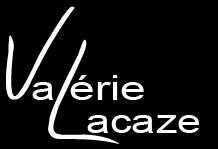
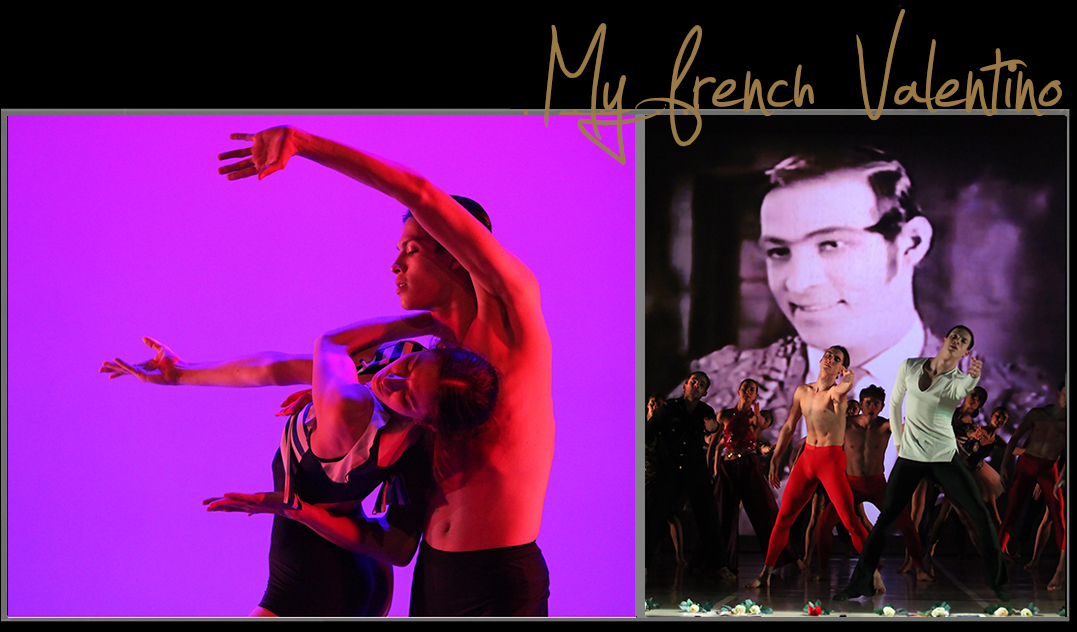
© valerielacaze.com


"MY FRENCH VALENTINO"
Original idea - Stage direction - Choreography - Texts & musical choices :
Valérie Lacaze
Creation in 4 acts for 42 dancers, actors and singers
Switzerland : Premiere at the Barnabé Theater - Servion, May 17 & 18th - 2019
Italy : Opening performance, Spoleto Festival, June 28th & 29th
Thailand : Gala for the Thailand King coronation's festivities
(4 performances in Bangkok)
"Monini Prize" 2019, Spoleto Festival-Italy : Pierre Antoine Bardot, principal role of this creation
Recorded musics : 51mn47
Mili Balakirev - Maurice Ravel - Russian folk music - John Barry - Maurice André & Michel Legrand - Astor Piazzolla - Ravi Shankar - Charles Chaplin - The bix Beiderbecke Story - Sigmund Romberg - Nino Rota.
Songs : 24mn02
Claude Nougaro - Jean-Jacques Goldman - Ray Ventura et ses collégiens - Tino Rossi - The Golden Gate Quartet - Jacques Prévert et Jeanne Moreau - Lucienne Delyle.
Recorded musical interludes : 16mn12 - Valérie Lacaze
Original musics : 6mn 43
Anne Vadagnin ( Nijinsky, Paparazzis, final )
Special thanks to the talented Fabien Ayer for the sound's recording
Videomontage : Valérie Lacaze
Costume's creation : Valérie Lacaze - Caroline Zanetti
Light creation : Marko Kekic
World copyright : www.ssa.ch
"MY FRENCH VALENTINO"
Idée originale - Mise en scène - Chorégraphies - Textes & choix musicaux :
Valérie Lacaze
Création en 4 actes pour 42 danseurs, acteurs et chanteurs
Suisse : Premiere au Théâtre Barnabé, Servion, 17 & 18 mai- 2019
Italie : Ouverture du Festival de Spoleto, 28 et 29 juin
Thailande : 4 spectacles à Bangkok pour les festivités du couronnement du roi
Prix "Monini" 2019, Festival de Spoleto-Italie, attribué à Pierre Antoine Bardot, soliste principal de la création
Musiques existantes: 51mn47
Mili Balakirev - Maurice Ravel - Musique populaire russe - John Barry - Maurice André & Michel Legrand - Astor Piazzolla - Ravi Shankar - Charles Chaplin - The bix Beiderbecke Story - Sigmund Romberg - Nino Rota.
Chansons : 24mn02
Claude Nougaro - Jean-Jacques Goldman - Ray Ventura et ses collégiens - Tino Rossi - The Golden Gate Quartet - Jacques Prévert et Jeanne Moreau - Lucienne Delyle.
Interludes musicaux enregistrés : 16mn12 - Valérie Lacaze
Musiques originales : 6mn 43
Anne Vadagnin ( Nijinsky, Paparazzis et final )
Avec l'oreille attentive et experte de Fabien Ayer pour les enregistrements sonores
Montage vidéo : Valérie Lacaze
Création costumes : Valérie Lacaze - Caroline Zanetti
Création lumière : Marko Kekic
Copyright monde : www.ssa.ch
The photographs, videos & texts are not royalty- free.
Please contact me for publication permission.
Les textes, vidéos et photographies ne sont pas libres de droit.
Merci de me contacter pour toute utilisation.
Work in progress : When Valentino meet Natacha Rambova
Extrait de l'Acte 3 : la ségrégation raciale aux Etats-Unis en 1912
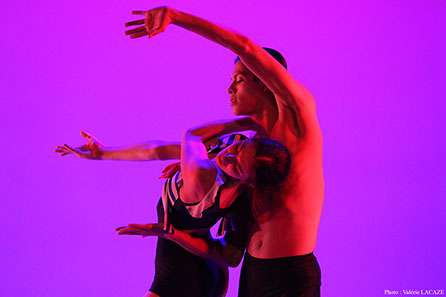
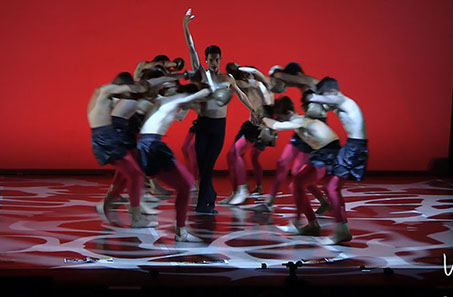
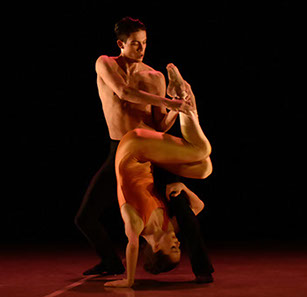
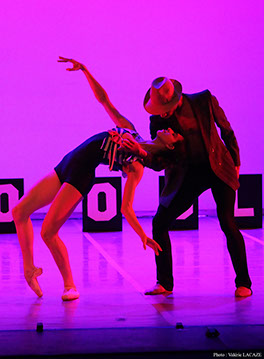
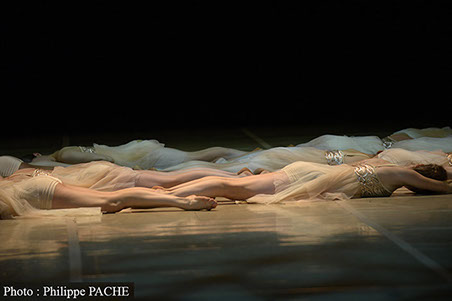
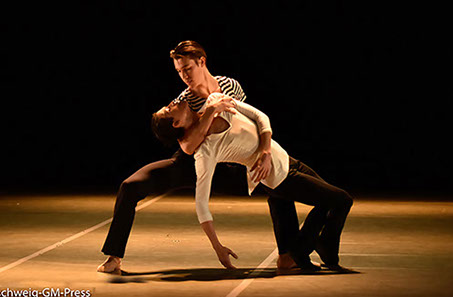
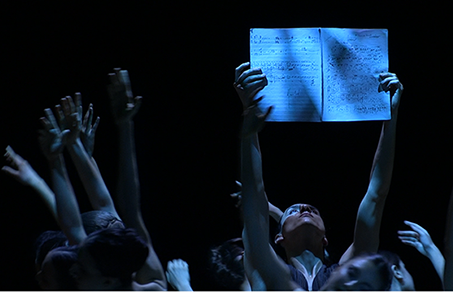
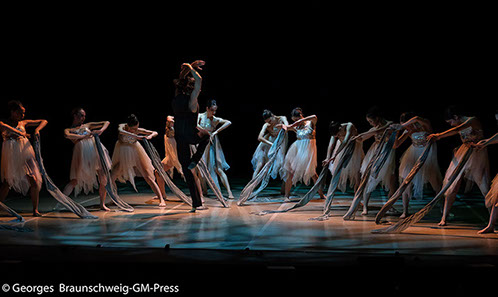
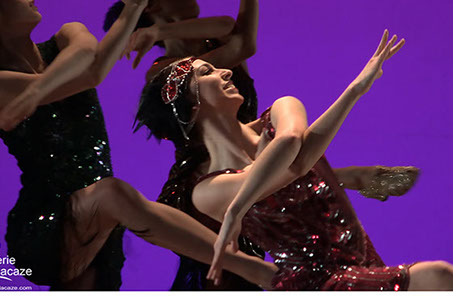
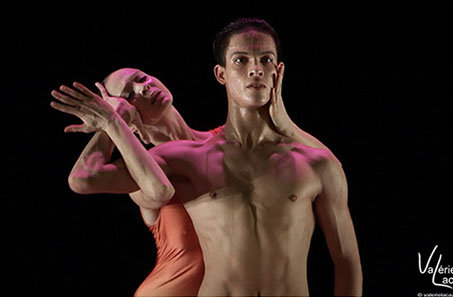
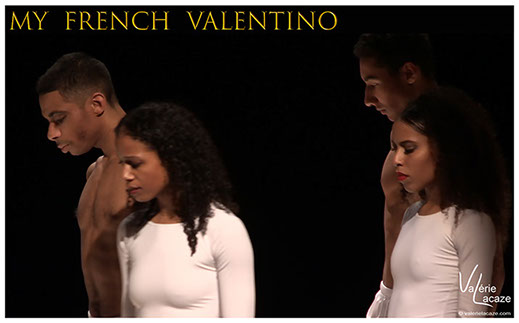
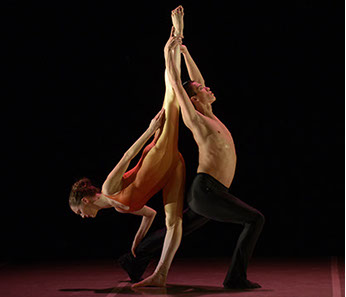
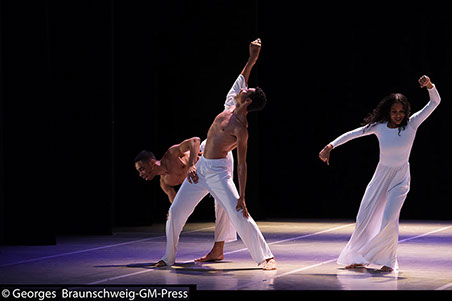
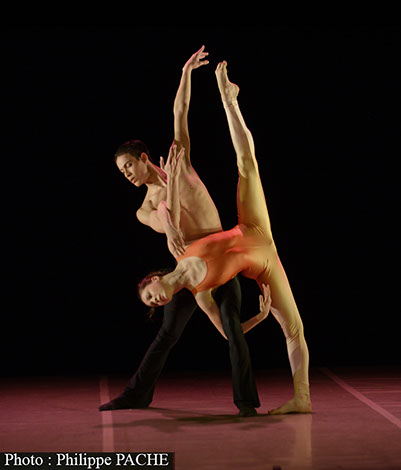
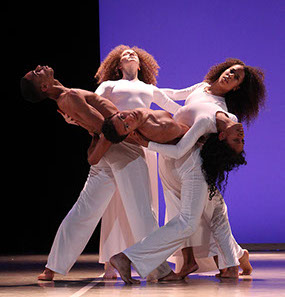
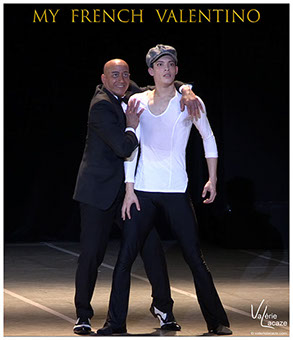
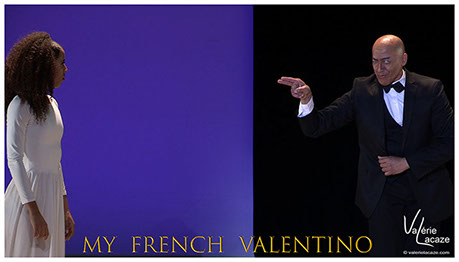
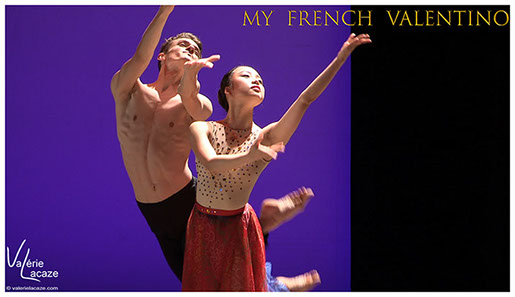
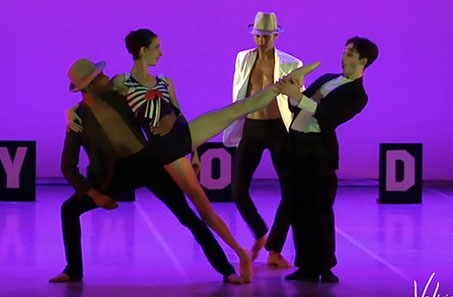
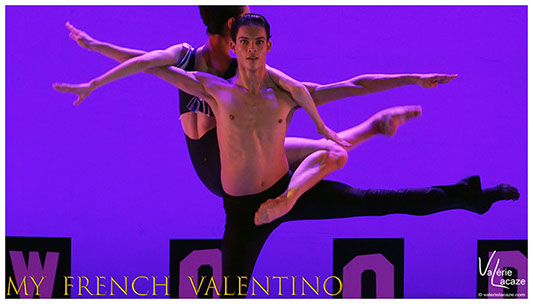
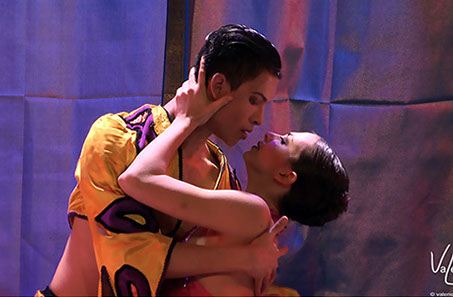
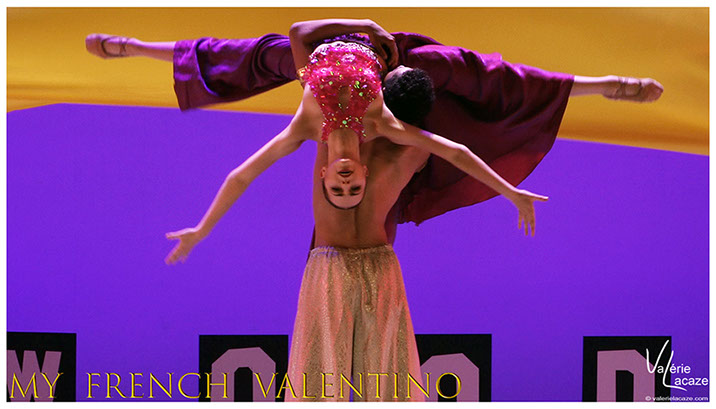
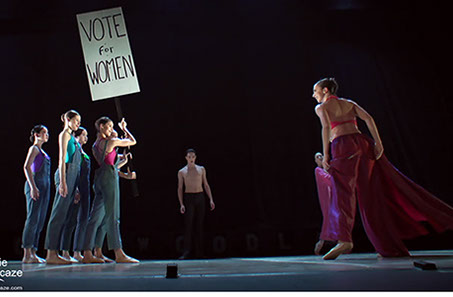
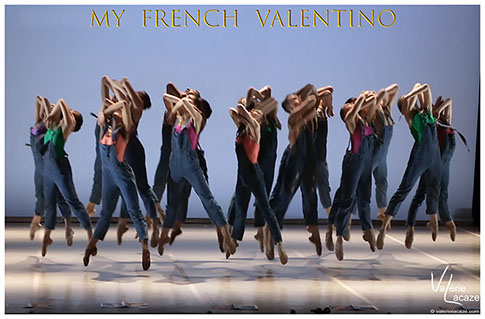
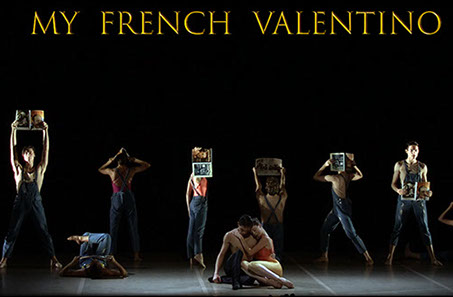
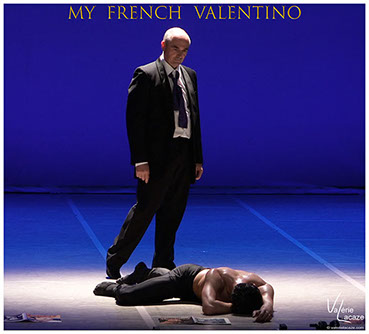
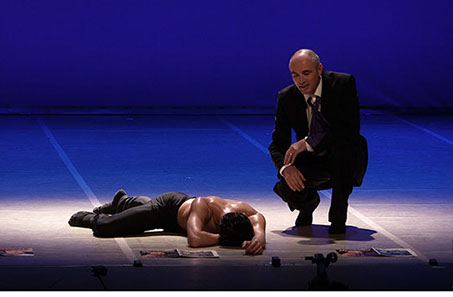
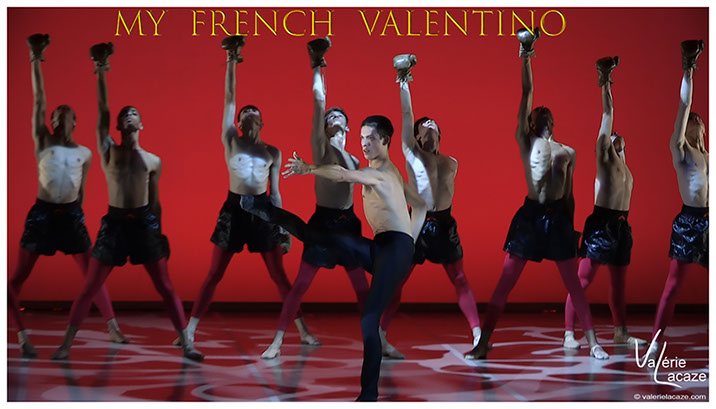
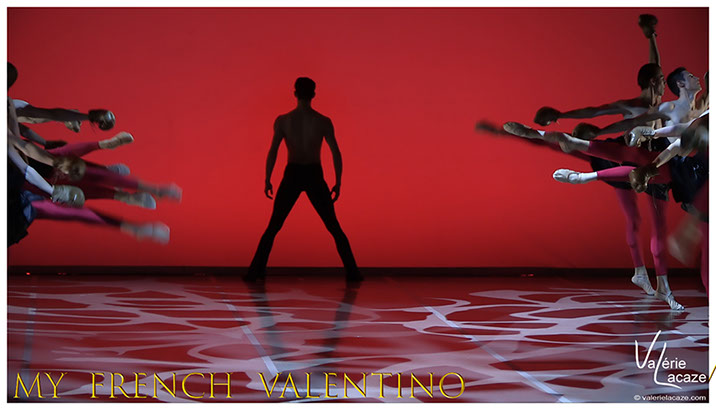
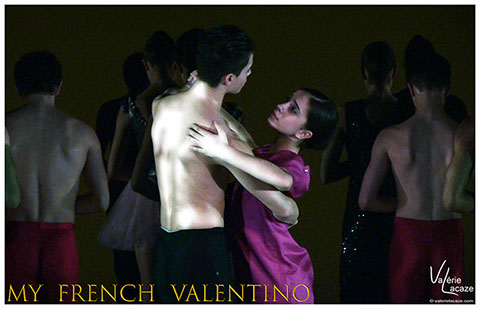
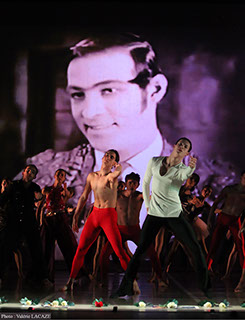
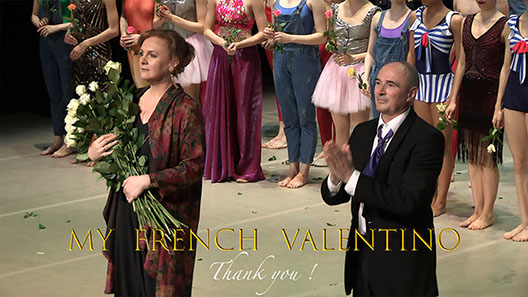
<
>

Le Prix Monini 2019 a été attribué à Pierre-Antoine Bardot, interprète principal de "My french Valentino"
(Un prix attribué en 2012 à Michal Brayshnikov).
The Monini Prize 2019 was awarded to Pierre-Antoine Bardot, principal performer of "My French Valentino"
(A prize awarded in 2012 to Michal Brayshnikov).
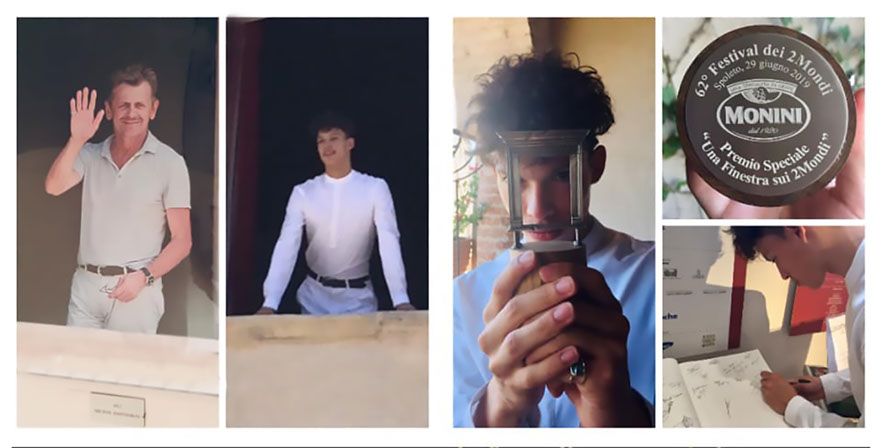

While the silent-film superstar Douglas Fairbanks, in the role of the caped crusader, was making audiences shudder as he leapt from a balcony onto the back of a galloping horse, and Charlie Chaplin was making audiences roar with laughter by breaking social norms and conventions, a newcomer to the emerging world of Hollywood cinema, Rudolf Valentino, was generating a new phenomenon - mass hysteria!
Outside the studios women scream and yell his name, or sleep on the pavement in front of his house in the hope of catching just a glimpse of the star.
Men are divided into two clans, openly taking sides and shouting insults at each other in the street, in restaurants, and in the workplace. Jealous husbands accuse him of not being a real man and spread sordid rumours of immoral behaviour.
In the world of silent cinema, the only name on everyone’s lips is Rudolf Valentino, the great lover!
Every day, mass media releases a new article about him.
To keep up with readers’ enthusiasm, newspapers publish stories devoted exclusively to Hollywood gossip – the beginnings of tabloid journalism!
When he died of septicaemia in 1921, he was only 31 years old.
Scores of female admirers committed suicide, throwing themselves out of windows or under cars. Huge crowds of mourners smashed windows and doors, devastating the chapel where he lay in state.
In the nineteen twenties, what woman hadn’t dreamt of being taken and kissed by those glowing lips that reflected the moonlight, or being abducted, through no will of her own, by the handsome desert rider draped in a silk cloak?
Rudolf Valentino had literally invented the screen lover.
Thirty years after his death, a radio show attempts to solve the mystery of the identity of the woman in a black mourning veil who comes every year to place a red rose at Valentino’s grave.
Who is she? What is her connection with the last star of Hollywood’s silent cinema? Is there some secret lurking behind her anonymity?
As the story of this original creation unravels in three acts, the dancers carry the audience along, inviting them to discover the dazzling existence of the beautiful Italian Rudolf Valentino: his early years as a dancer in pre-war Paris when the city was under the charm of Diaghilev’s provocative Ballets Russes; his departure for the United States in search of the American dream; and his extraordinary encounters in New York and Hollywoodland.
The musics which has been brilliantly combined with popular music of the time and 20th- and 21st-century French chansons, is full of surprises and delightful novelty.
With this new creation, the independent choreographer Valérie Lacaze is back working on the swiss stages following the success of her "Camille Claudel the Forgotten Bride" in 2012 and "Qualia or the Artist's life" in 2013, which attracted audiences of almost 50,000 people worldwide.
« Alors que Douglas Fairbanks, star du cinéma muet, fait frémir le public sous les traits d'un vengeur masqué, bondissant d'un balcon sur le dos d'un cheval au galop, et qu'un certain Charles Chaplin faire rire aux larmes en transgressant les convenances sociétales, le nouveau venu Rudolf Valentino déclenche ce qui n'avait alors jamais existé dans le monde naissant du cinéma Hollywoodien : l'hystérie collective !
Les femmes hurlent son nom en l'attendant à l'entrée des studios, dorment sur le trottoir devant chez lui pour se donner un chance de l'apercevoir quelques minutes.
Les hommes, divisés en deux clans, prennent parti ouvertement, s'invectivent dans la rue, au restaurant, sur leurs lieux de travail. Les maris jaloux l'accusent de n'être pas vraiment un homme et font courir les bruits sordides d'histoires amorales ... .
Le monde du cinema muet n'a plus qu'un nom à la bouche : Rudolf Valentino, the great lover !
Les médias, jusque-là généralistes, décident de lui consacrer un article tous les jours.
Devant l'engouement des lecteurs, la presse invente des nouveaux titres exclusivement consacrés aux potins hollywoodiens, c'est la naissance des journaux à scandale !
Lorsqu'il meurt d'une septicémie en 1926, il n'a que 31 ans.
Des dizaines d'admiratrices se jettent par les fenêtres ou sous les roues des voitures pour mettre fin à leurs jours. La foule immense saccage la chapelle où sa dépouille est exposée, brisant vitraux, portes et fenêtres.
Quelle femme des années 20 n'a pas rêvé d'être renversée sur un coussin et embrassée par ces lèvres sur lesquelles luit le reflet de la lune ? D'être enlevée, à son corps défendant, par ce cavalier du désert, si beau sous sa cape de soie ?
A l’écran, Rudolf Valentino a littéralement inventé le désir !
A l’occasion d’une émission radiophonique 30 ans après sa disparition, on tente de découvrir qui se cache sous le voile noir de la veuve éplorée qui vient chaque année déposer une rose rouge sur la tombe de Valentino.
Qui est-elle ? Quel lien entretenait-elle avec la dernière star du cinéma muet hollywoodien ? Son anonymat cache-t-il un secret ?
Tout au long des 3 actes de cette création originale, les danseurs entrainent le public dans une véritable enquête historique.
Ils invitent à découvrir la fulgurante existence du bel italien Rudolf Valentino : sa jeunesse de danseur dans un Paris d'avant-guerre où les Ballets russes de Diaghilev charment et provoquent, son immigration vers le rêve américain et ses rencontres extraordinaires de New-York au tout nouveau Hollywoodland.
L'habile association des musiques d'époque avec les chansons françaises des 20 et 21' siècles provoquent surprises et dépaysement.
La chorégraphe indépendante Valérie Lacaze retrouve les scènes suisses après les succès de "Camille Claudel la mariée de l'oubli" en 2012 et de "Qualia ou la vie d'artiste" en 2013 qui avaient rassemblé près de 50'000 spectateurs à travers le monde.

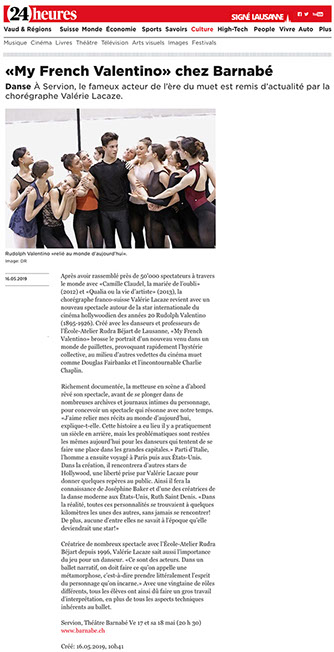
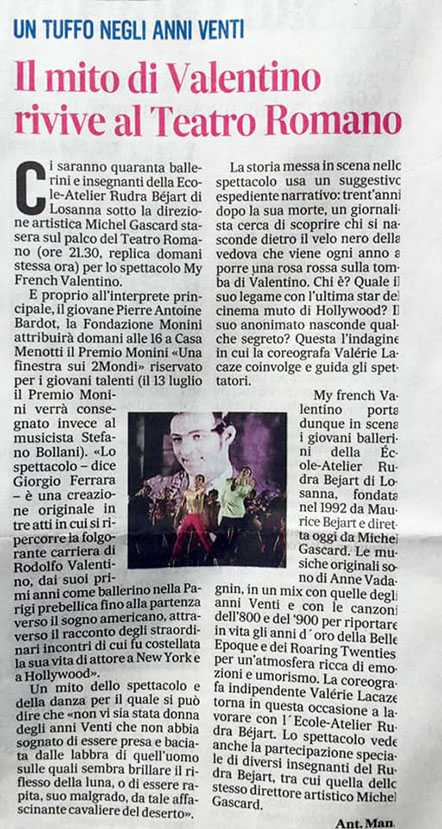
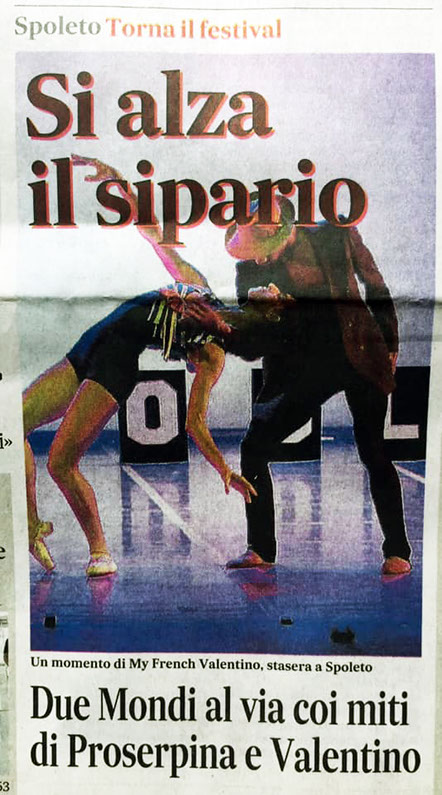
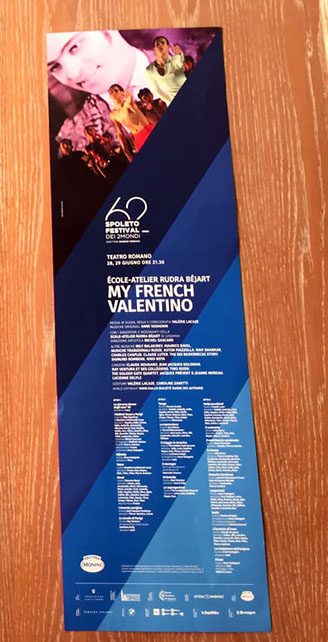
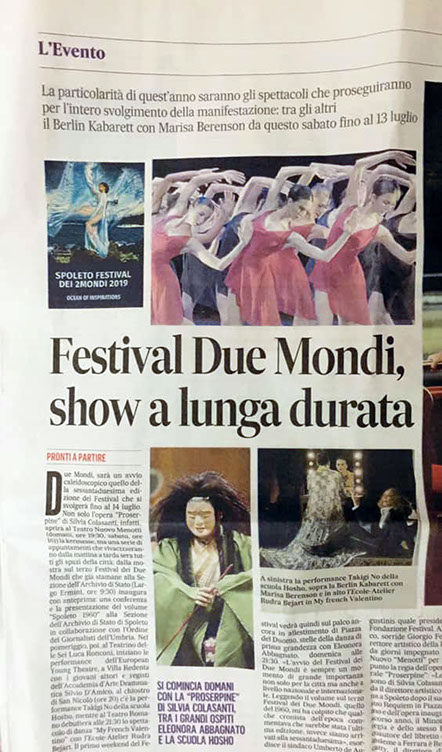
Website & logo created by Valérie Lacaze - Copyright 2013